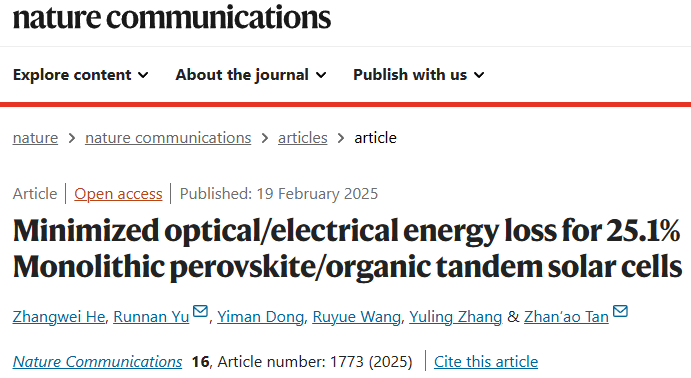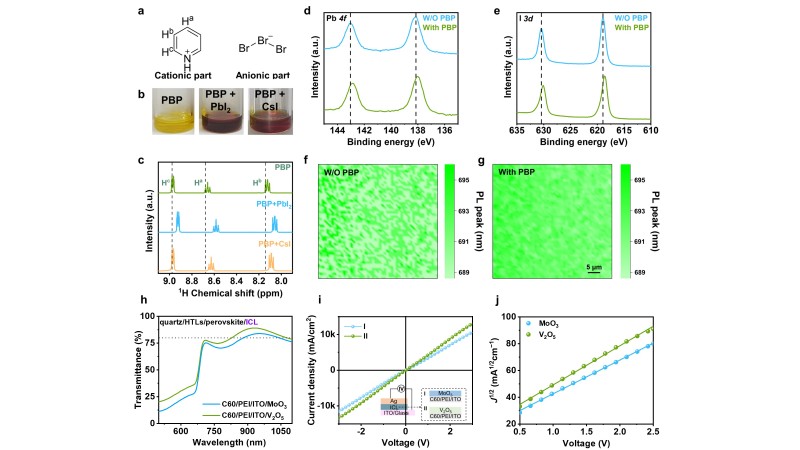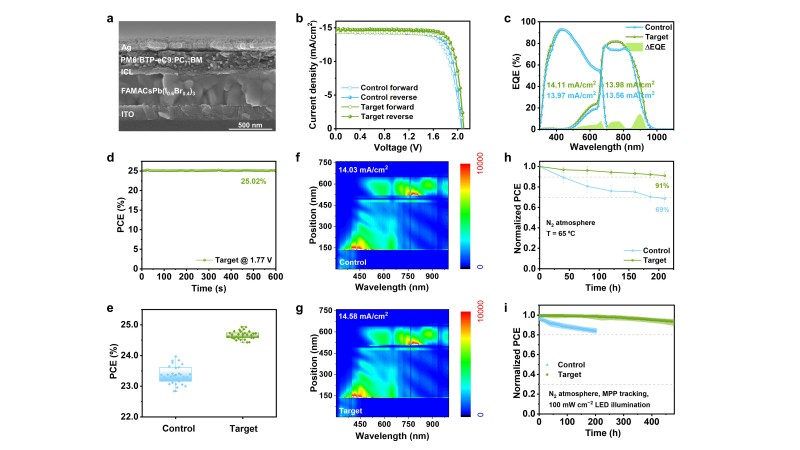
Constructing tandem structures is a crucial approach to surpassing the Shockley-Queisser limit for the power conversion efficiency in solar cells. Among them, perovskite/organic tandem solar cells (PO-TSCs) stand out due to their exceptional performance, lightweight portability, and the advantage of low-energy consumption for large-area device fabrication, attracting widespread attention in recent years. However, energy losses in the sub-cells of PO-TSCs and optoelectronic losses in the intermediate connecting layer (ICL) significantly limit further improvements in PO-TSC performance.

Figure 1 Optimization of Wide-Bandgap Sub-Cells and Intermediate Layers
Recent work by Tan et al. employs the hydrogen bonding-coordination synergistic effect between pyridinium bromide salt and the perovskite layer to passivate defects and inhibit ion migration in the front perovskite sub-cell, significantly reducing energy losses and markedly increasing the open-circuit voltage of the perovskite sub-cell. Simultaneously, a low-optoelectronic-loss ICL structure is designed. Compared to the traditional ICL based on molybdenum trioxide (MoO3), the ICL based on vanadium pentoxide (V2O5) exhibits higher transmittance in the near-infrared region. Furthermore, the designed ICL structure offers better conductivity, higher carrier mobility, and more matched energy level alignment, which facilitates improved charge transport and extraction at the interface and minimizes charge accumulation at the ICL, thereby balancing the current output between the perovskite and organic sub-cells. Ultimately, a PO-TSC with an efficiency of 25.1% has been fabricated. This work emphasizes the importance of simultaneously minimizing energy losses in the sub-cells and optoelectronic losses in the ICL, providing valuable insights for constructing high-performance PO-TSCs.

Figure 2: Device Performance of Perovskite/Organic Tandem Solar Cells
The first author is Dr. Zhangwei He from the Center for Soft Matter Science and Engineering, and the corresponding authors are Prof. Runnan Yu from the School of Materials Science and Engineering and Prof. Zhan'ao Tan from the Center for Soft Matter Science and Engineering. This research was supported by the National Natural Science Foundation of China.
Article Information:
Zhangwei He, Runnan Yu, Yiman Dong, Ruyue Wang, Yuling Zhang, Zhan'ao Tan, Minimized optical/electrical energy loss for 25.1% Monolithic perovskite/organic tandem solar cells. Nature Communications, 2025, 16(1): 1773.
Original Article Link:
https://doi.org/10.1038/s41467-025-57093-1